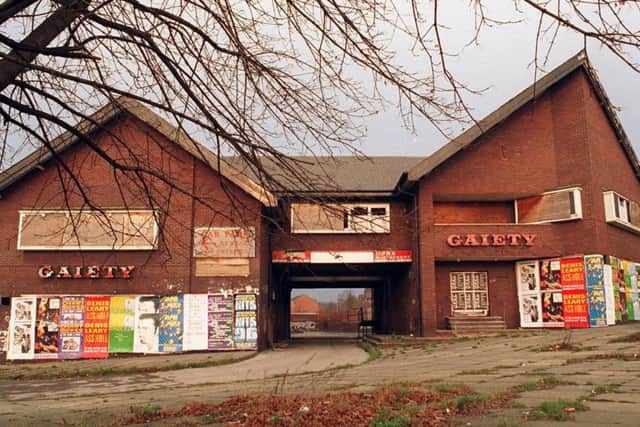Why Chapeltown in Leeds was the Yorkshire Ripper's 'hunting ground'
and live on Freeview channel 276
Last night's opening episode of The Yorkshire Ripper Files explored the pivotal role the suburb played in the murder spree.
Many of his attacks came after he had cruised the streets looking for victims, and the area’s reputation as a red light district meant that it was easier for him to persuade women to get into his car while soliciting.
Chapeltown - what the area was like in the 1970s


Advertisement
Hide AdAdvertisement
Hide AdChapeltown, which lies to the north-east of the city centre, was once an affluent district of Leeds, developed in the 19th century for the city’s emerging merchant classes. Many architecturally significant villas and mansions were built in the area and several of Leeds’ mill owners had large residences in Chapeltown. It became a hub for the Jewish community following their migration from Europe. Cheaper terraced housing was later built on the remaining land between the substantial properties and the city centre.
By the 1970s, when the Ripper’s killing spree took hold, the area was in decline. Wealthy residents, including the prosperous Jewish families, had moved further north to areas such as Moortown and Alwoodley. Many of the old mansions had been divided up into low-rent bedsits and flats, and the population was transient. Chapeltown became Leeds’ main red light district, with the sex trade centred around Spencer Place, the thoroughfare which divides Chapeltown and Harehills. Close enough to the city centre to attract custom but with quieter streets and cheap accommodation readily available, it was a notorious neighbourhood for vice.
The first murder
Although Sutcliffe had already attacked several women who survived their ordeals, his first murder took place in Chapeltown in 1975. His victim, Wilma McCann, lived on Scott Hall Avenue and had been drinking in local pubs when Sutcliffe picked her up when she was thumbing drivers for a lift home. They agreed a price for sex and parked up next to the Prince Philip playing fields, off Scott Hall Road. Sutcliffe hit the mother of four, who was 28, with a hammer and left her body to be found by a milkman the next day.
Chapeltown becomes the focal point of the investigation
In 1976, he stabbed Emily Jackson, 42, over 50 times after picking her up while she was soliciting outside the Gaiety pub on Roundhay Road. He drove her to some derelict buildings on Enfield Terrace on the Manor industrial estate.
Advertisement
Hide AdAdvertisement
Hide AdAnother Leeds attack took place just months later, when Marcella Claxton, 20, was attacked in Roundhay Park with a hammer after she had accepted a lift from Sutcliffe while walking home from a party. She survived.
In 1977, a prostitute from Chapeltown, Irene Richardson, was murdered in Roundhay Park. The 28-year-old lived in a boarding house on Cowper Street, and was also picked up outside the Gaiety. She was hit with a hammer on Soldiers Field and her body was left behind the sports pavilion, where it was found by a jogger.
At this point, police believed they were hunting for a 'prostitute killer', and their activities focused on Chapeltown. Attacks on women not involved in sex work were even dismissed because they didn't fit this theory.
Shortly afterwards he committed the murder that most horrified the public - the killing of 16-year-old Jayne Macdonald, who was both his youngest victim and the first not to be involved in sex work. Jayne, who lived on Scott Hall Avenue, close to first victim Wilma McCann, had been on a night out in the city centre and was walking home up Chapeltown Road when Sutcliffe spotted her and followed her. He later said he believed she was a prostitute. He attacked her with a hammer and knife in a children’s playground off Reginald Street. Sutcliffe had deliberately driven to his ‘hunting ground’ after leaving a family party in Bradford.